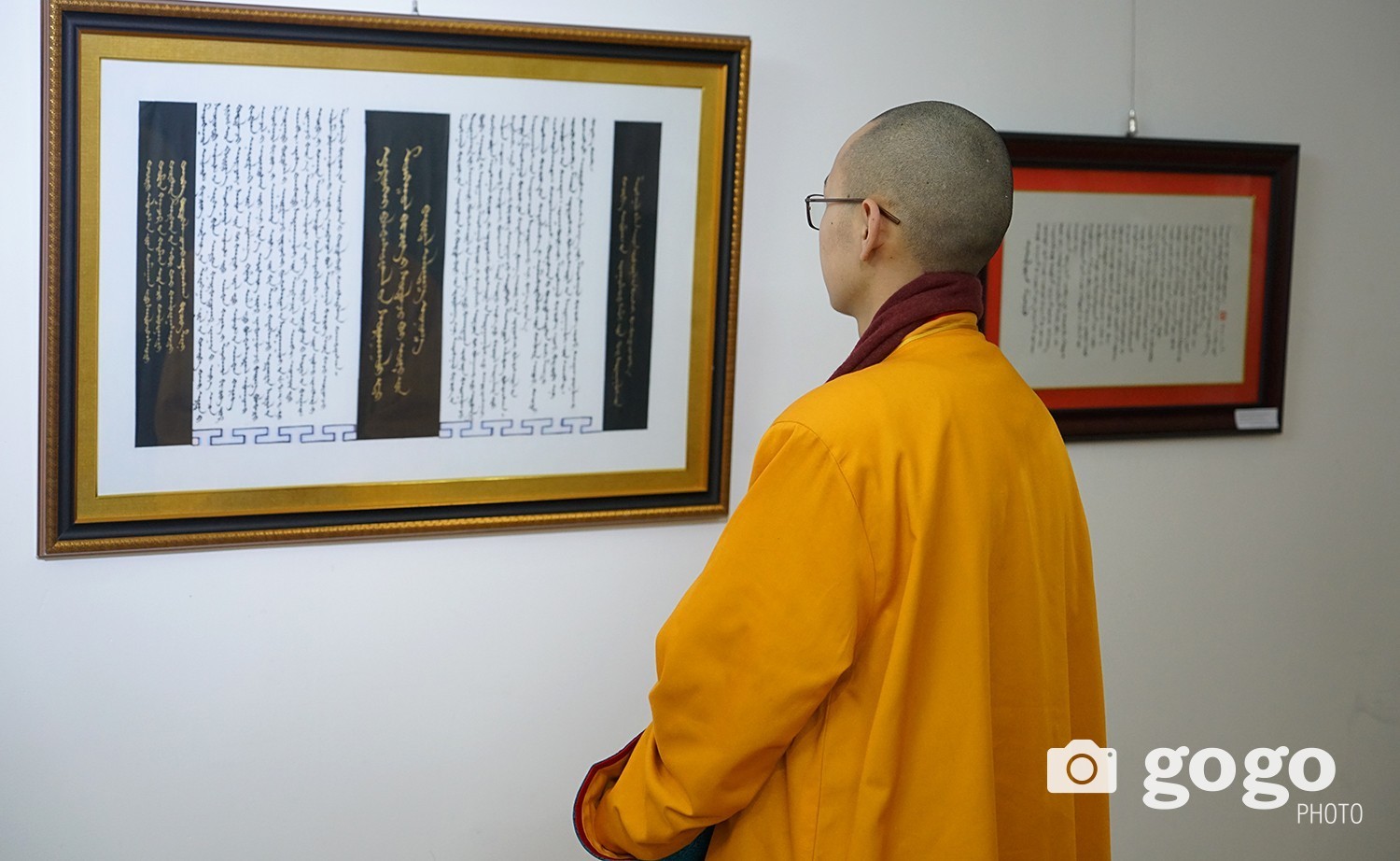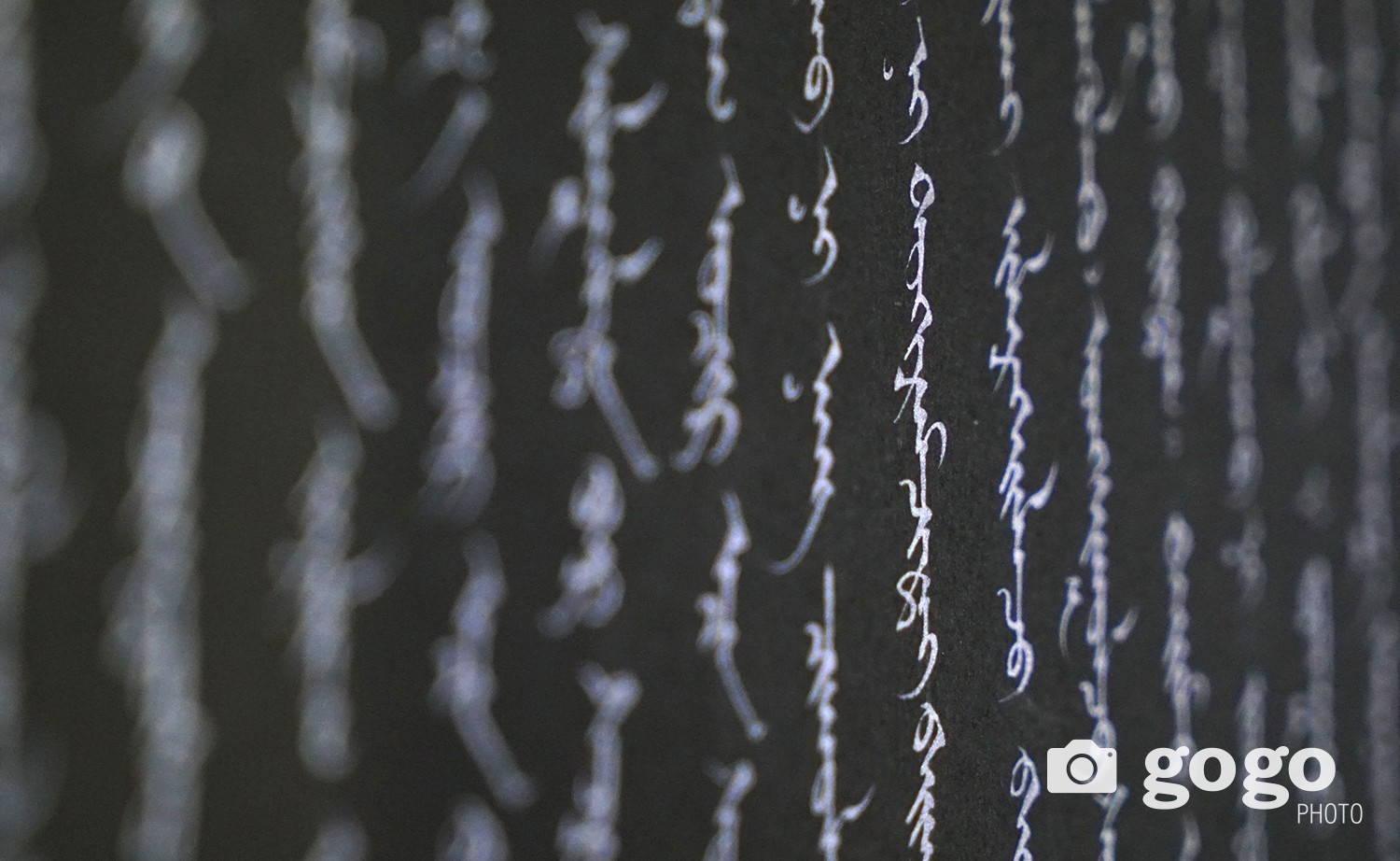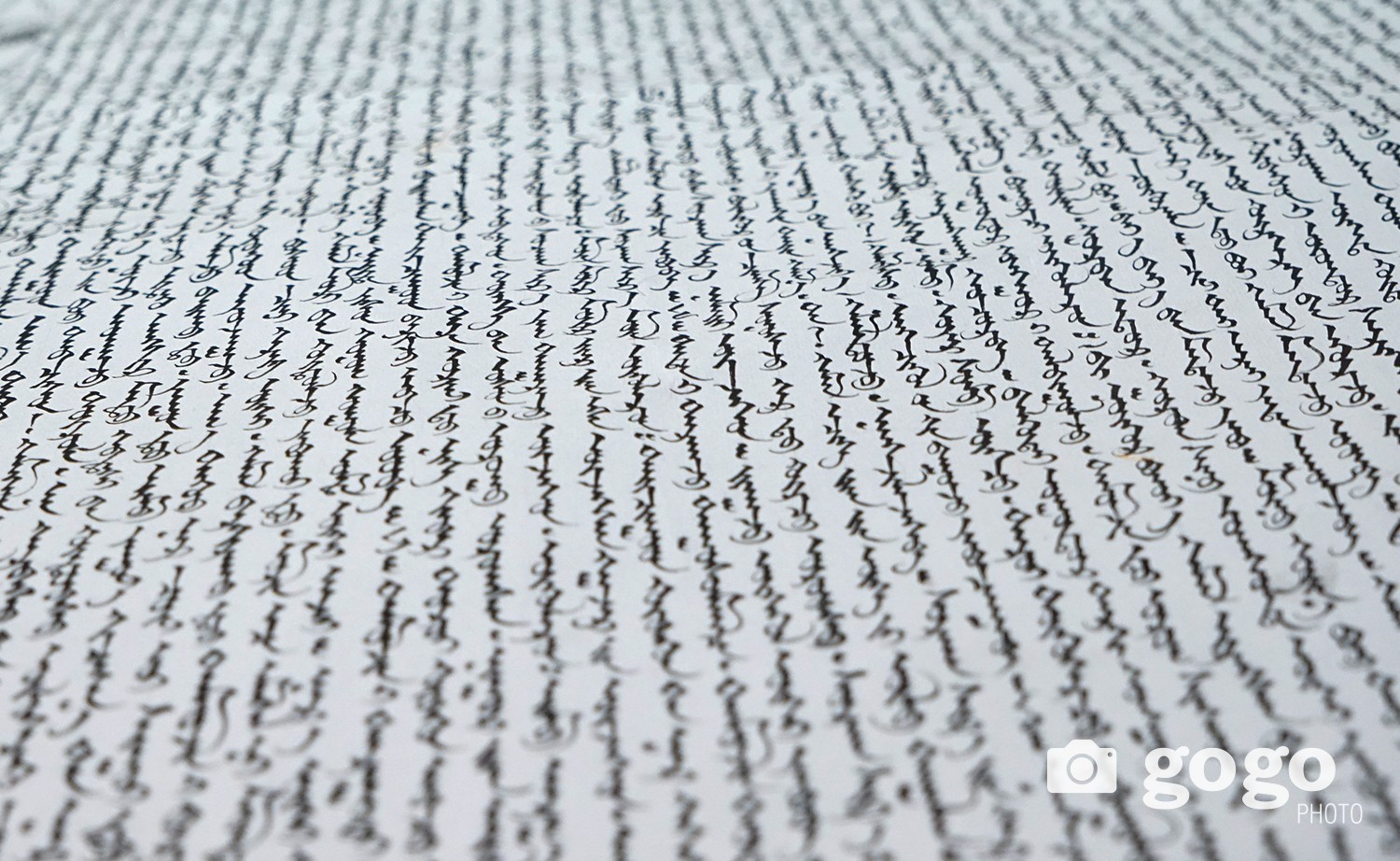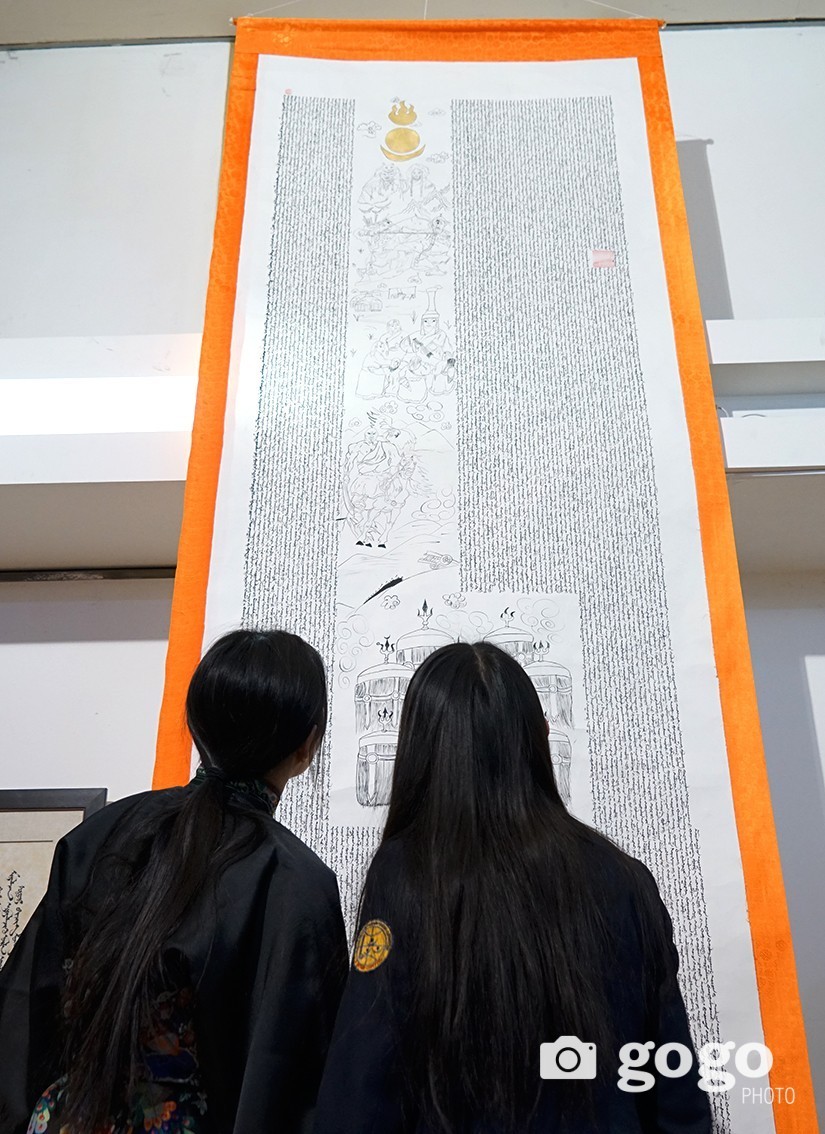The classical or traditional Mongolian script also known as Hudum Mongol bichig, was the first writing system created specifically for the Mongolian language, and was the most successful until the introduction of Cyrillic in 1946.
Derived from the Old Uyghur alphabet, Mongolian is a true alphabet, with separate letters for consonants and vowels. The Mongolian script has been adapted to write languages such as Oirat and Manchu. Alphabets based on this classical vertical script are used in Inner Mongolia and other parts of China to this day to write Mongolian, Xibe and experimentally, Evenki.

History
The Mongolian vertical script developed as an adaptation of the Sogdian to the Mongolian language. From the seventh and eighth to the fifteenth and sixteenth centuries, the Mongolian language separated into southern, eastern and western dialects. The principal monuments of the middle period are: in the eastern dialect, the famous text The Secret History of the Mongols, monuments in the square script, materials of the Chinese-Mongolian glossary of the fourteenth century, and materials of the Mongolian language of the middle period in Chinese transcription, etc.; in the western dialect, materials of the Arab-Mongolian and Persian-Mongolian dictionaries, Mongolian texts in Arabic transcription, etc.

The main features of the period are that the vowels ï and i had lost their phonemic significance, creating the i phoneme (in the Chakhar dialect, the Standard Mongolian in Inner Mongolia, they're still distinct); intervocal consonants γ/g, b/w had disappeared and the preliminary process of the formation of Mongolian long vowels had begun; the initial h was preserved in many words; grammatical categories were partially absent, etc. The development over this period explains why Mongolian script looks like a vertical Arabic script (in particular the presence of the dots system).

Eventually, minor concessions were made to the differences between the Uyghur and Mongol languages: In the 17th and 18th centuries, smoother and more angular versions of tsadi became associated with [dʒ] and [tʃ]respectively, and in the 19th century, the Manchu hooked yodh was adopted for initial [j]. Zain was dropped as it was redundant for [s]. Various schools of orthography, some using diacritics, were developed to avoid ambiguity.
Mongolian is written vertically. The Uyghur script and its descendants—Mongolian, Oirat Clear, Manchu, and Buryat—are the only vertical scripts written from left to right. This developed because the Uyghurs rotated their Sogdian-derived script, originally written right to left, 90 degrees counterclockwise to emulate Chinese writing, but without changing the relative orientation of the letters.

Teaching
Mongols learned their script as a syllabary, dividing the syllables into twelve different classes, based on the final phonemes of the syllables, all of which ended in vowels.The Manchus followed the same syllabic method when learning Manchu script, also with syllables divided into twelve different classes based on the final phonemes of the syllables.
Despite the alphabetic nature of its script, Manchu was not taught phoneme by phoneme per letter like western languages are, rather, Manchu children were taught to memorize all the syllables in the Manchu language separately as they learned to write, like Chinese characters. Manchus when learning, instead of saying l, a---la; l, o---lo; etc., were taught at once to say la, lo, etc. Many more syllables than are contained in their syllabary might have been formed with their letters, but they were not accustomed to arrange them otherwise than as they there stand.
They made, for instance, no such use of the consonants I, m, n, and r, as westerners do when they called them liquid; hence if the Manchu letters s, m, a, r, t, were joined in that order, a Manchu would not able to pronounce them as English speaking people pronounce the word "smart".
Manchu children were taught the language via the syllabic method.
Some westerners learn the script in an alphabetic manner instead.

Today, the opinion on whether it is alphabet or syllabic in nature is still split between different experts. In China, it is considered syllabic and Manchu is still taught in this manner.
The alphabetic approach is used mainly by foreigners who want to learn the language. Studying Manchu script as a syllabary takes a longer time.
Name
The Traditional Mongolian script is known by a wide variety of names. Due to its shape like Uighur script, it became known as the Uighurjin Mongol script.
During the communist era, when Cyrillic became the official script for the Mongolian language, the traditional script became known as the Old Mongol script in contrast to the New script, referring to Cyrillic.
The name Old Mongol script stuck, and it is still known as such among the older generation, who didn't receive education in the new script.
Source: wikipedia.org
The classical or traditional Mongolian script also known as Hudum Mongol bichig, was the first writing system created specifically for the Mongolian language, and was the most successful until the introduction of Cyrillic in 1946.
Derived from the Old Uyghur alphabet, Mongolian is a true alphabet, with separate letters for consonants and vowels. The Mongolian script has been adapted to write languages such as Oirat and Manchu. Alphabets based on this classical vertical script are used in Inner Mongolia and other parts of China to this day to write Mongolian, Xibe and experimentally, Evenki.

History
The Mongolian vertical script developed as an adaptation of the Sogdian to the Mongolian language. From the seventh and eighth to the fifteenth and sixteenth centuries, the Mongolian language separated into southern, eastern and western dialects. The principal monuments of the middle period are: in the eastern dialect, the famous text The Secret History of the Mongols, monuments in the square script, materials of the Chinese-Mongolian glossary of the fourteenth century, and materials of the Mongolian language of the middle period in Chinese transcription, etc.; in the western dialect, materials of the Arab-Mongolian and Persian-Mongolian dictionaries, Mongolian texts in Arabic transcription, etc.

The main features of the period are that the vowels ï and i had lost their phonemic significance, creating the i phoneme (in the Chakhar dialect, the Standard Mongolian in Inner Mongolia, they're still distinct); intervocal consonants γ/g, b/w had disappeared and the preliminary process of the formation of Mongolian long vowels had begun; the initial h was preserved in many words; grammatical categories were partially absent, etc. The development over this period explains why Mongolian script looks like a vertical Arabic script (in particular the presence of the dots system).

Eventually, minor concessions were made to the differences between the Uyghur and Mongol languages: In the 17th and 18th centuries, smoother and more angular versions of tsadi became associated with [dʒ] and [tʃ]respectively, and in the 19th century, the Manchu hooked yodh was adopted for initial [j]. Zain was dropped as it was redundant for [s]. Various schools of orthography, some using diacritics, were developed to avoid ambiguity.
Mongolian is written vertically. The Uyghur script and its descendants—Mongolian, Oirat Clear, Manchu, and Buryat—are the only vertical scripts written from left to right. This developed because the Uyghurs rotated their Sogdian-derived script, originally written right to left, 90 degrees counterclockwise to emulate Chinese writing, but without changing the relative orientation of the letters.

Teaching
Mongols learned their script as a syllabary, dividing the syllables into twelve different classes, based on the final phonemes of the syllables, all of which ended in vowels.The Manchus followed the same syllabic method when learning Manchu script, also with syllables divided into twelve different classes based on the final phonemes of the syllables.
Despite the alphabetic nature of its script, Manchu was not taught phoneme by phoneme per letter like western languages are, rather, Manchu children were taught to memorize all the syllables in the Manchu language separately as they learned to write, like Chinese characters. Manchus when learning, instead of saying l, a---la; l, o---lo; etc., were taught at once to say la, lo, etc. Many more syllables than are contained in their syllabary might have been formed with their letters, but they were not accustomed to arrange them otherwise than as they there stand.
They made, for instance, no such use of the consonants I, m, n, and r, as westerners do when they called them liquid; hence if the Manchu letters s, m, a, r, t, were joined in that order, a Manchu would not able to pronounce them as English speaking people pronounce the word "smart".
Manchu children were taught the language via the syllabic method.
Some westerners learn the script in an alphabetic manner instead.

Today, the opinion on whether it is alphabet or syllabic in nature is still split between different experts. In China, it is considered syllabic and Manchu is still taught in this manner.
The alphabetic approach is used mainly by foreigners who want to learn the language. Studying Manchu script as a syllabary takes a longer time.
Name
The Traditional Mongolian script is known by a wide variety of names. Due to its shape like Uighur script, it became known as the Uighurjin Mongol script.
During the communist era, when Cyrillic became the official script for the Mongolian language, the traditional script became known as the Old Mongol script in contrast to the New script, referring to Cyrillic.
The name Old Mongol script stuck, and it is still known as such among the older generation, who didn't receive education in the new script.
Source: wikipedia.org

